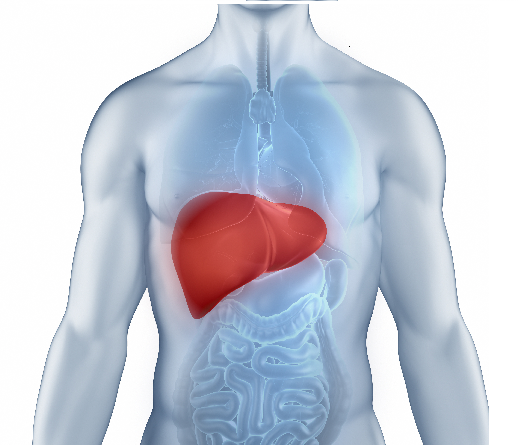5 Common Habits That Are Unknowingly Damaging Liver Health
- 2 Sep, 2024
- Written by Team Dr Lal PathLabs
Medically Approved by Dr. Seema
Table of Contents

The liver is one of the vital organs in the body. It is responsible for converting nutrients, removing toxins from the blood, and controlling blood sugar. Damage to this organ can have serious consequences, and many common habits may contribute to liver injury. This is why it’s important to minimize exposure to harmful substances and recognize the early signs of liver damage. In this article, we’ll explore liver damage, its risk factors, symptoms, and everyday habits that can harm the liver.
What is Liver Damage?
Liver damage occurs when certain practices or substances harm the liver. Over time, this damage can cause scarring, called liver cirrhosis. However, early diagnosis and treatment can help heal the damage to some extent. Liver diseases can occur for various reasons, including genetic factors or harmful lifestyles or habits.
What Causes Liver Damage?
Specific lifestyle patterns can have adverse effects on liver health, which, left untreated, can cause severe health conditions. Some common liver damage causes include:
1. Excessive Alcohol Consumption
One of the most common causes of liver damage is heavy alcohol consumption. Excess alcohol reduces the liver’s ability to remove toxins and may lead to an increase in red blood cells. This is because the liver has to focus on converting alcohol to a reduced toxin form, detracting from its primary functions.
2. Overusing Medications
One of the functions of the liver is breaking down medications in the blood. However, overuse of medications or drugs can cause them to build up in the liver and damage it by causing inflammation and swelling. This is called drug-induced hepatitis.
3. Smoking
When toxins in cigarette smoke reach the liver, they can cause oxidative stress, where the liver cells are exposed to too many free radicals. This can cause injury and fibrosis. It can also cause inflammation and iron depletion, impairing the liver’s regenerative ability.
4. High Sugar Diet
The liver converts fructose into fat, which is often stored within the liver. Excessive sugar intake can lead to this fat accumulation, resulting in non-alcoholic fatty liver disease (NAFLD), a condition that can progress to liver disease.
5. Excess Weight
Extra fat in the body can build up in the liver cells, leading to non-alcoholic fatty liver disease. This can lead to further complications, such as liver cirrhosis. Individuals are more likely to develop NAFLD if they are obese, middle-aged, or have diabetes.
Who is At Risk of Liver Damage?
The habits mentioned earlier make an individual more likely to develop complications with their liver. Other risk factors include:
– Sharing non-sterile needles, like while getting tattooed or pierced.
– Being exposed to blood and/or other bodily fluids for work-related reasons (for example, those working in the medical field).
– Having a family history of liver disease.
– Exposure to pesticides or toxins (for example, not washing fruits and vegetables thoroughly).
– Having diabetes or high cholesterol.
What are the Symptoms of Liver Damage?
Common bad liver symptoms include:
– Jaundice, or the yellowing of the whites of the eyes and skin.
– Pain or swelling in the belly.
– Swelling in the ankles and legs.
– Itchiness of the skin or easy bruising.
– Darkened urine or pale, bloody, or black stool.
– Constant tiredness or fatigue.
– A loss of appetite, nausea or vomiting.
Recognizing liver problem symptoms is crucial in receiving adequate medical attention when needed.
How is Liver Damage Diagnosed?
If an individual is experiencing symptoms of liver damage, it is essential to visit a healthcare professional, who will run tests to confirm it. These include:
1. Blood Tests
Liver function tests can determine how well the liver functions, depending on the liver products in the blood. They can also identify liver failure and its complications, such as anemia and blood clotting.
2. Imagine Tests
Imaging of the liver can show swelling, scarring, or fluid buildup in the abdomen.
3. Liver Biopsy
A liver biopsy involves taking and testing a tissue sample from the liver. It can confirm liver cirrhosis or help determine the cause of liver disease.
How to Prevent Liver Damage?
A good diet, moderation in alcohol consumption, and healthy weight help maintain liver health. Regular exercise and avoiding toxins are also important in preventing liver disease.
Liver damage symptoms can often go unnoticed. In addition to making healthier lifestyle changes, scheduling regular checkups with a healthcare professional can help catch any potential problems early on.
If an individual is experiencing any symptoms related to liver problems, it is essential to consult a doctor and book a liver health test with Dr Lal PathLabs today.
FAQs
1. What causes fatty liver disease?
Fatty liver disease refers to fat builds up in the liver, causing it to swell. While the exact cause is not known, some factors include obesity, excessive alcohol consumption, high blood pressure, and high cholesterol.
2. Can liver disease be treated?
Yes, many types of liver disease can be treated and cured.














